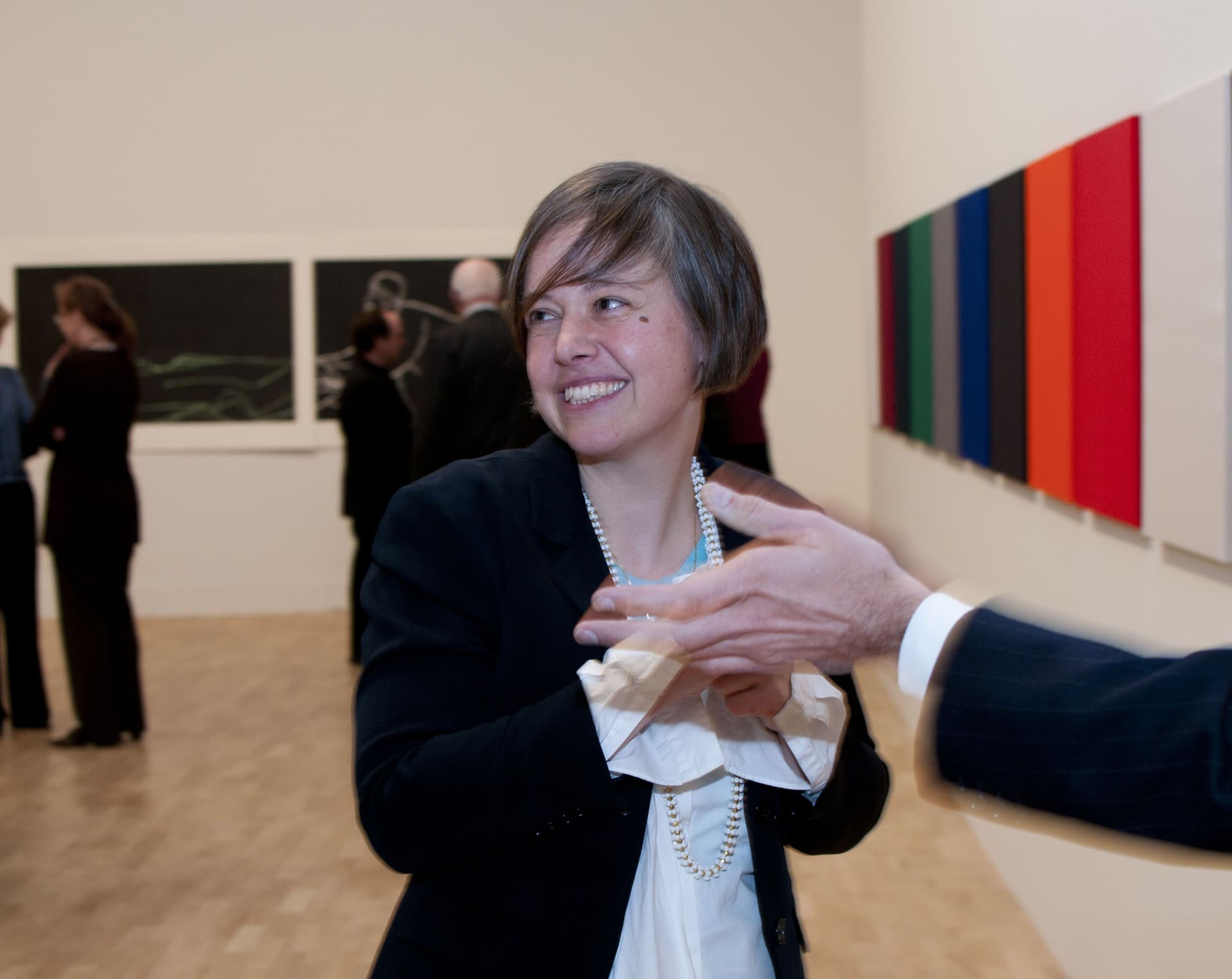3rd edition, 2009–2011, Andrea Büttner

I am just trying to articulate diverse social connotations or possibilities.
Andrea Büttner
For the third edition of the Max Mara Art Prize for Women, winning artist Andrea Büttner (b. 1972) explored the intersection of religion, art and the role of the artist in today’s world. Through prints, textiles, photographs and everyday objects, she transformed the exhibition space into a place of contemplation.
Finalists and jury
Finalists: Becky Beasley, Andrea Büttner, Elizabeth Price
Jury: Iwona Blazwick OBE, director of Whitechapel Gallery; Polly Staple, curator; Alison Jacques, gallerist; Fiona Banner, artist; Valeria Napoleone, collector
The winning project
The Poverty of Riches, Büttner’s winning project for the Max Mara Art Prize for Women, explores the concept of poverty by examining points of tangency between religious and artistic rituals and analogies between religious communities and the art world, alongside a personal investigation of the symbolic use of fabric in Italian religious art.
Drawing inspiration from Kenneth Baxter Wolf’s The Poverty of Riches, which looks at the theme of voluntary poverty, Büttner pursued her interest in monastic and artistic movements, especially Arte Povera, a current of Italian art that developed in the late 1960s.
In Büttner’s view, the monastic renunciation of wealth is echoed by the choice of “poverty” in Arte Povera, which opposes the opulence of mass media, style, meaning, and the art market.
Residency
During her Italian residency, Andrea Büttner’s work was facilitated by Giancarlo Aragona during his time as Italian ambassador in London, by the American Academy in Rome and its Director Carmela Vircillo Franklin, and by Maria and Michelangelo Pistoletto at Fondazione Pistoletto in Biella.
Over the course of her six-month residency, Büttner also had the opportunity to live with religious communities in Umbria, to visit Giotto’s frescos in Assisi, and to explore Collezione Maramotti in Reggio Emilia, encountering the work of artists such as Alberto Burri, Enrico Castellani and Piero Manzoni, whose approach to materials foreshadowed the Italian Arte Povera movement.


The Poverty of Riches
Whitechapel Gallery (1–10 April 2011)
Collezione Maramotti (13 November 2011–29 April 2012)
The Italian residency organized for Büttner has clearly shaped her project The Poverty of Riches; it treats the exhibition space as a place of meditation and contemplation, connecting the notions of poverty expressed in twelfth-century Italy by Saint Francis with those of twentieth-century Arte Povera. Woodcuts incorporating Christian iconography, such as a table laid for a meal, are presented alongside what Büttner refers to as “paintings”: monochrome pieces made with cloth from the uniforms of public servants (park wardens, police officers, refuse collectors). This series of monochromes reclaims the autonomous conception of art found in High Modernism; more specifically, in the experiments of Kazimir Severinovich Malevich, Yves Klein and Ad Reinhardt.
Through these works, along with other evocatively humble materials – a pile of apples, a paper napkin, a text-only screenprint – the artist explores the symbolic use of fabric and objects in Italian religious art and in a contemporary secular form. Büttner devoted particular attention to the narrative and symbolic connotations of textiles. The wealth of Saint Francis’s family came from the cloth trade, so textiles were the source of the affluence he voluntarily renounced, as the first vital step in founding the Franciscan order. The symbolic aspect of fabric thus turns up again in the monks’ choice to wear rough, humble, uncomfortable fabrics that visibly manifest their spiritual decision.
In this show, the exhibition space becomes a place of contemplation, presenting works that incorporate elements of religious iconography and employ a traditional woodcut technique. Alongside them, ordinary fabrics have been stretched on a frame and presented on colourful ‘paintings’.





After the initial stage of the exhibition at the Whitechapel Gallery in London, Büttner reconceived and adapted it for the spaces of Collezione Maramotti.

Title: The Poverty of Riches
Texts by: Iwona Blazwick
Conversation: Bina von Stauffenberg
Publisher: Whitechapel Gallery, London
Year: 2011
Number of pages: 32
Dimension: 14,8 x 21 cm
Languages: inglese / italiano

